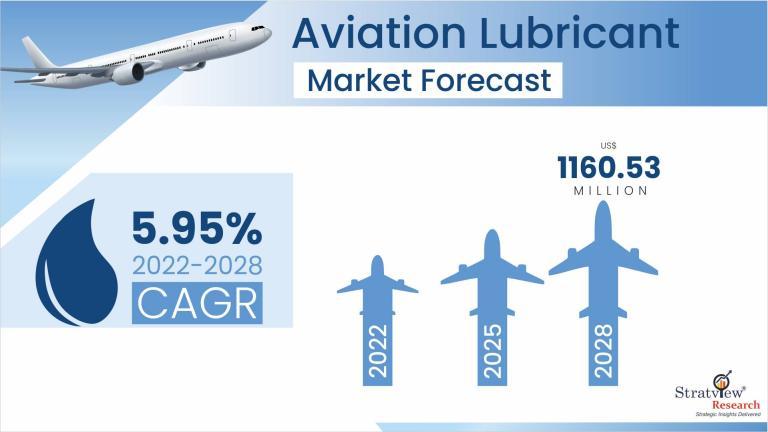Aviation Lubricants – The Key to Efficiency and Performance in Aerospace

Aviation lubricants are essential to ensuring the longevity, performance, and safety of aircraft engines and systems. These specialized lubricants are designed to withstand the extreme conditions faced by aircraft during takeoff, flight, and landing, ensuring that the components remain in optimal working condition. The growth of the aviation sector, combined with increasing technological advancements in aerospace engineering, is fueling the demand for high-performance aviation lubricants.
According to Stratview Research, the aviation lubricant market is estimated to grow from US$ 820.08 million in 2022 to US$ 1160.53 million in 2028 and is likely to grow at a CAGR of 5.95% over the next five years.
This growth is driven by the following factors:
-
Growth of Global Air Travel: As air travel continues to grow, there is an increasing demand for aircraft maintenance and engine performance optimization. The aviation industry relies on lubricants to minimize friction, improve fuel efficiency, and reduce wear and tear on engine parts. As more aircraft are produced and put into service, the market for aviation lubricants is expected to expand, particularly in commercial aviation and military aviation.
-
Advancements in Lubricant Technology: Aviation lubricants have evolved significantly to meet the demands of modern engines. Synthetic lubricants are increasingly being used due to their superior thermal stability, oxidation resistance, and reliability under extreme temperatures. These advancements not only improve engine efficiency but also contribute to extended service life, reducing downtime and maintenance costs. The rise of bio-based lubricants is also noteworthy, as they offer a more environmentally friendly alternative to traditional petroleum-based lubricants.
-
Regulatory Pressure and Sustainability: The aviation industry is under increasing pressure to meet environmental standards and reduce its carbon emissions. Aviation lubricants play a significant role in helping airlines improve fuel efficiency by reducing friction and wear in engines. Additionally, as regulations around greenhouse gas emissions tighten, the demand for lubricants that comply with these regulations is growing, particularly those that are non-toxic and biodegradable.
The North American region remains the largest market for aviation lubricants, driven by the strong presence of aerospace companies and extensive commercial and military air fleets in the U.S. and Canada. However, the Asia-Pacific region is expected to experience the highest growth due to the expanding aviation infrastructure in China, India, and Southeast Asia.
In conclusion, aviation lubricants are integral to the efficiency, longevity, and environmental sustainability of aircraft. As air traffic increases globally and new technologies emerge, the aviation lubricant market will continue to expand, playing a pivotal role in the future of aviation.
- Art
- Causes
- Crafts
- Dance
- Drinks
- Film
- Fitness
- Food
- Games
- Gardening
- Health
- Home
- Literature
- Music
- Networking
- Other
- Party
- Religion
- Shopping
- Sports
- Theater
- Wellness


